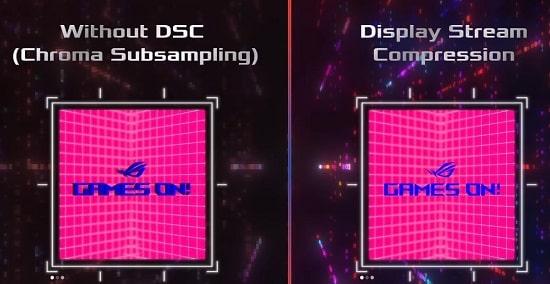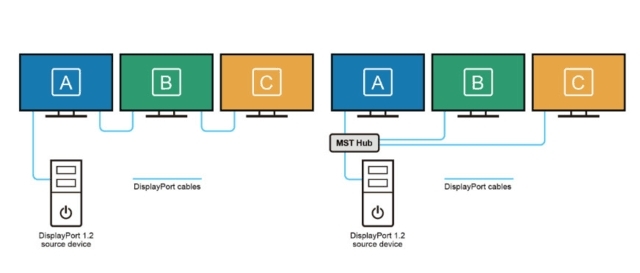DisplayPort 2.1 allows a maximum bandwidth of up to 80 Gbps (depending on transport mode), is forward compatible with previous DisplayPort standards, and supports DSC (Display Stream Compression) and MST (Multi Stream Transport ).


DisplayPort 2.1 enables up to 3X increase in video bandwidth performance (max payload of 77.37 Gbps)
Maximum link rate to up to 20 Gbps/lane and features more efficient 128b/132b channel coding, delivering a maximum payload of 77.37 Gbps
First standard to support 8K resolution (7680 x 4320) at 60 Hz refresh rate with full-color 4:4:4 resolution, including with 30 bits per pixel (bpp) for HDR-10 support
Beyond 8K resolutions
Higher refresh rates and high dynamic range (HDR) support at higher resolutions
Improved support for multiple display configurations
Improved user experience with augmented/virtual reality (AR/VR) displays, including support for 4K-and-beyond VR resolutions.
Advantages of DP 2.0 are enjoyed across both the native DP connector as well as the USB Type-C connector
Support for visually lossless Display Stream Compression (DSC) with Forward Error Correction (FEC), HDR metadata transport, and other advanced features
Example Configurations:
Single display resolutionsOne 16K (15360×8460) display @60Hz and 30 bpp 4:4:4 HDR (with DSC)
One 10K (10240×4320) display @60Hz and 24 bpp 4:4:4 (no compression)Dual display resolutionsTwo 8K (7680×4320) displays @120Hz and 30 bpp 4:4:4 HDR (with DSC)
Two 4K (3840×2160) displays @144Hz and 24 bpp 4:4:4 (no compression)Triple display resolutionsThree 10K (10240×4320) displays @60Hz and 30 bpp 4:4:4 HDR (with DSC)
Three 4K (3840×2160) displays @90Hz and 30 bpp 4:4:4 HDR (no compression)When using only two lanes on the USB-C connector via DP Alt Mode to allow for simultaneous SuperSpeed USB data and video, DP 2.0 can enable such configurations as:Three 4K (3840×2160) displays @144Hz and 30 bpp 4:4:4 HDR (with DSC)
Two 4Kx4K (4096×4096) displays (for AR/VR headsets) @120Hz and 30 bpp 4:4:4 HDR (with DSC)
Three QHD (2560×1440) @120Hz and 24 bpp 4:4:4 (no compression)
One 8K (7680×4320) display @30Hz and 30 bpp 4:4:4 HDR (no compression)
Reference
Retrieved February 22, 2023, from VESA Web site: https://www.displayport.org/faq/#tab-displayport-2-1-standard
Tag:




